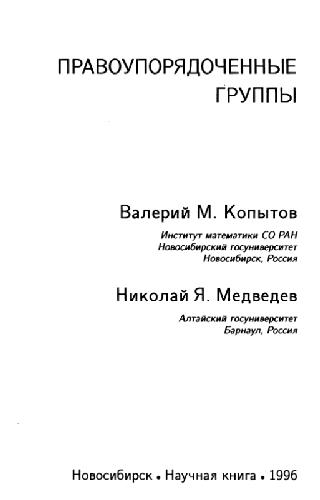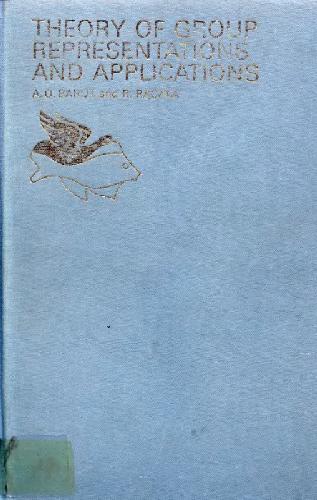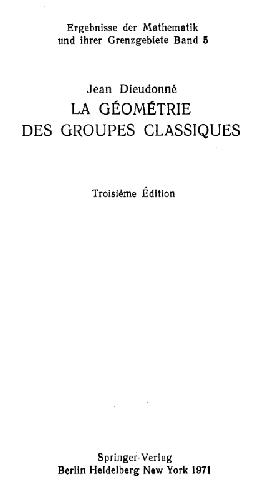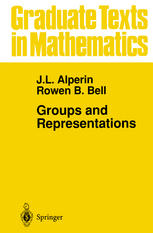Howard Baer, Xerxes Tata0521857864, 9780521857864, 9780511191930
Table of contents :
Cover……Page 1
Title Page……Page 4
Contents……Page 7
Preface……Page 14
1.1 Gauge invariance……Page 19
1.2 Spontaneous symmetry breaking……Page 21
1.3.2 The electroweak model……Page 24
02 What lies beyond the Standard Model?……Page 29
2.1 Scalar fields and quadratic divergences……Page 30
2.2 Why is the TeV scale special?……Page 32
2.3 What could the New Physics be?……Page 34
3.1.1 The field content……Page 41
3.1.2 SUSY transformations and invariance of the action……Page 43
3.1.3 The chiral multiplet……Page 46
3.1.4 Algebra of the SUSY charges……Page 47
3.2 Quantization of the WZ model……Page 50
3.3 Interactions in the WZ model……Page 53
3.4 Cancellation of quadratic divergences……Page 54
3.5 Soft supersymmetry breaking……Page 57
4.1 Rotations……Page 59
4.2 The Lorentz group……Page 60
4.3 The Poincar´e group……Page 62
4.4 The supersymmetry algebra……Page 64
5.1 Superfields……Page 67
5.2 Representations of symmetry generators: a recap……Page 70
5.3 Representation of SUSY generators as differential operators……Page 72
5.4 Useful θ identities……Page 74
5.5 SUSY transformations of superfields……Page 76
5.6 Irreducible SUSY multiplets……Page 78
5.6.1 Left-chiral scalar superfields……Page 79
5.6.2 Right-chiral scalar superfields……Page 81
5.7 Products of superfields……Page 82
5.8 Supercovariant derivatives……Page 83
5.9 Lagrangians for chiral scalar superfields……Page 86
5.9.1 K¨ahler potential contributions to the Lagrangian density……Page 88
5.9.2 Superpotential contributions to the Lagrangian density……Page 90
5.9.3 A technical aside……Page 92
5.9.4 A master Lagrangian for chiral scalar superfields……Page 93
5.10 The action as an integral over superspace……Page 94
6.1 Gauge transformations of superfields……Page 97
6.2.1 Abelian gauge transformations……Page 102
6.2.2 Non-Abelian gauge transformations……Page 104
6.3 The curl superfield in theWess–Zumino gauge……Page 107
6.4 Construction of gauge kinetic terms……Page 110
6.5 Coupling chiral scalar to gauge superfields……Page 113
6.6 A master Lagrangian for SUSY gauge theories……Page 116
6.7 The non-renormalization theorem……Page 122
07 Supersymmetry breaking……Page 123
7.1 SUSY breaking by elementary fields……Page 124
7.2 F-type SUSY breaking: the O’Raifeartaigh model……Page 125
7.2.1 Mass spectrum: Case A……Page 127
7.2.2 Mass spectrum: Case B……Page 129
7.3 D-type SUSY breaking……Page 131
7.3.2 Case B……Page 132
7.4 Composite goldstinos……Page 133
7.5 Gaugino condensation……Page 134
7.6 Goldstino interactions……Page 135
7.7.1 Scalar contributions……Page 136
7.7.2 Vector contributions……Page 137
7.8 Explicit supersymmetry breaking……Page 139
7.9 A technical aside: γ5-dependent fermion mass matrices……Page 142
8.1 Constructing the MSSM……Page 145
8.1.1 Parameter space of the MSSM……Page 152
8.1.2 A simplified parameter space……Page 154
8.2 Electroweak symmetry breaking……Page 156
8.3.1 Gauge bosons……Page 159
8.3.2 Matter fermions……Page 160
8.3.3 Higgs bosons……Page 162
8.3.4 Gluinos……Page 166
8.3.5 Charginos and neutralinos……Page 167
8.3.6 Squarks and sleptons……Page 173
8.4.1 QCD interactions in the MSSM……Page 179
8.4.2 Electroweak interactions in the MSSM……Page 182
8.4.3 Interactions of MSSM Higgs bosons……Page 192
8.5.1 Higgs boson masses……Page 202
8.5.3 Chargino and neutralino masses……Page 205
8.6 Should the goldstino be part of the MSSM?……Page 206
09 Implications of the MSSM……Page 208
9.1.1 The SUSY flavor problem……Page 209
9.1.2 The SUSY CP violation problem……Page 213
9.1.3 Large CP-violating parameters in the MSSM?……Page 214
9.2.1 Gauge couplings and unification……Page 217
9.2.2 Evolution of soft SUSY breaking parameters……Page 222
9.2.3 Radiative breaking of electroweak symmetry……Page 227
9.2.4 Naturalness constraint on superparticle masses……Page 229
9.3 Constraints from b → sγ decay……Page 232
9.4 Bs → μ+μ− decay……Page 235
9.5 Muon anomalous magnetic moment……Page 238
9.6 Cosmological implications……Page 239
9.6.1 Relic density of neutralinos……Page 241
9.6.2 Direct detection of neutralino dark matter……Page 246
9.6.3 Indirect detection of neutralinos……Page 248
9.7 Neutrino masses……Page 249
9.7.1 The MSSM plus right-handed neutrinos……Page 250
10 Local supersymmetry……Page 253
10.1.1 General co-ordinate transformations……Page 254
10.1.2 Covariant differentiation, connection fields, and the Riemanncurvature tensor……Page 256
10.1.3 The metric tensor……Page 258
10.1.4 Einstein Lagrangian and field equations……Page 260
10.1.5 Spinor fields in General Relativity……Page 261
10.2 Local supersymmetry implies (super)gravity……Page 263
10.3 The supergravity Lagrangian……Page 269
10.4 Local supersymmetry breaking……Page 275
10.4.1 Super-Higgs mechanism……Page 276
11 Realistic supersymmetric models……Page 279
11.1.1 Hidden sector origin of soft supersymmetry breaking terms……Page 282
11.1.2 Why is the μ parameter small?……Page 286
11.1.3 Supergravity Grand Unification (SUGRA GUTs)……Page 287
11.2 Anomaly-mediated SUSY breaking……Page 296
11.2.1 The minimal AMSB (mAMSB) model……Page 298
11.2.2 D-term improved AMSB model……Page 302
11.3 Gauge-mediated SUSY breaking……Page 303
11.3.1 The minimal GMSB model……Page 305
11.3.2 Non-minimal GMSB models……Page 311
11.4 Gaugino-mediated SUSY breaking……Page 312
11.5 An afterword……Page 314
12 Sparticle production at colliders……Page 316
12.1 Sparticle production at hadron colliders……Page 317
12.1.1 Chargino–neutralino production……Page 319
12.1.2 Chargino pair production……Page 326
12.1.3 Neutralino pair production……Page 328
12.1.4 Slepton and sneutrino pair production……Page 330
12.1.5 Production of gluinos and squarks……Page 332
12.1.6 Gluino or squark production in association with charginosor neutralinos……Page 337
12.1.7 Higher order corrections……Page 339
12.2 Sparticle production at e+e− colliders……Page 340
12.2.1 Production of sleptons, sneutrinos, and squarks……Page 343
12.2.2 Production of charginos and neutralinos……Page 346
12.2.3 Effect of beam polarization……Page 349
12.2.4 Bremsstrahlung and beamstrahlung……Page 353
13 Sparticle decays……Page 356
13.1.1 g˜ → ud¯Wj : a worked example……Page 360
13.1.2 Other gluino decays……Page 364
13.2 Squark decays……Page 368
13.3 Slepton decays……Page 371
13.4 Chargino decays……Page 375
13.4.1 A chargino degenerate with the LSP……Page 378
13.5 Neutralino decays……Page 379
13.6 Decays of the Higgs bosons……Page 382
13.6.1 Light scalar h……Page 383
13.6.3 Pseudoscalar A……Page 384
13.7 Top quark decays to SUSY particles……Page 385
13.8.1 Interactions……Page 386
13.8.2 NLSP decay to a gravitino within the mGMSB model……Page 389
14 Supersymmetric event generation……Page 392
14.1.2 Parton showers……Page 395
14.1.3 Cascade decays……Page 397
14.1.4 Models of hadronization……Page 400
14.2 Event generator programs……Page 401
14.3.1 Program set-up……Page 402
14.3.2 Models for SUSY in ISAJETMSSM……Page 403
14.3.3 Generating events with ISAJET……Page 406
15 The search for supersymmetry at colliders……Page 412
15.1.1 e+e− collisions……Page 413
15.1.3 A light gluino window?……Page 415
15.2.1 SUSY searches at the Z pole……Page 416
15.2.2 SUSY searches at LEP2……Page 417
15.2.3 SUSY Higgs searches at LEP2……Page 419
15.3 Supersymmetry searches at the Tevatron……Page 420
15.3.1 Supersymmetry searches at run 1……Page 421
15.3.2 Prospects for future SUSY searches……Page 425
15.4 Supersymmetry searches at supercolliders……Page 432
15.4.1 Reach of the CERN LHC……Page 434
15.4.2 SUSY reach of e+e− colliders……Page 441
15.5.1 Precision SUSY measurements at the LHC……Page 445
15.5.2 Precision measurements at an LC……Page 455
15.5.3 Models of sparticle masses: a bottom-up approach……Page 468
15.6 Photon, muon, and very large hadron colliders……Page 470
16 R-parity violation……Page 472
16.1.1 The TRV Lagrangian……Page 475
16.1.2 Experimental constraints……Page 477
16.1.3 s-channel sparticle production……Page 483
16.1.4 R decay of the LSP……Page 484
16.1.5 Collider signatures……Page 486
16.2 Spontaneous (bilinear) R-parity violation……Page 488
17 Epilogue……Page 492
A.1.1 Chargino and neutralino production……Page 494
A.1.2 Gluino and squark production……Page 496
A.1.3 Gluino and squark associated production……Page 499
A.1.4 Slepton and sneutrino production……Page 500
A.2 Sparticle production at e+e− colliders……Page 501
B.1.1 Two-body decays……Page 509
B.1.3 ˜g →Z i t ¯t and ˜g →Z ib¯……Page 510
B.1.4 ˜g → Wi t¯b decays……Page 517
B.2 Squark decay widths……Page 519
B.3 Slepton decay widths……Page 524
B.4.1 Two-body decays……Page 527
B.4.2 Zi →Z j f ¯ f decays……Page 529
B.5.1 Two-body decays……Page 534
B.5.2 Three-body decay: Wi →Z j τ ¯ντ……Page 537
B.6 Top quark decay to SUSY particles……Page 541
C.1 Decays to SM fermions……Page 542
C.2 Decays to gauge bosons……Page 543
C.3 Decays to sfermions……Page 544
C.4 Decays to charginos and neutralinos……Page 546
C.5 Decays to Higgs bosons……Page 547
References……Page 549
Index……Page 551







Reviews
There are no reviews yet.